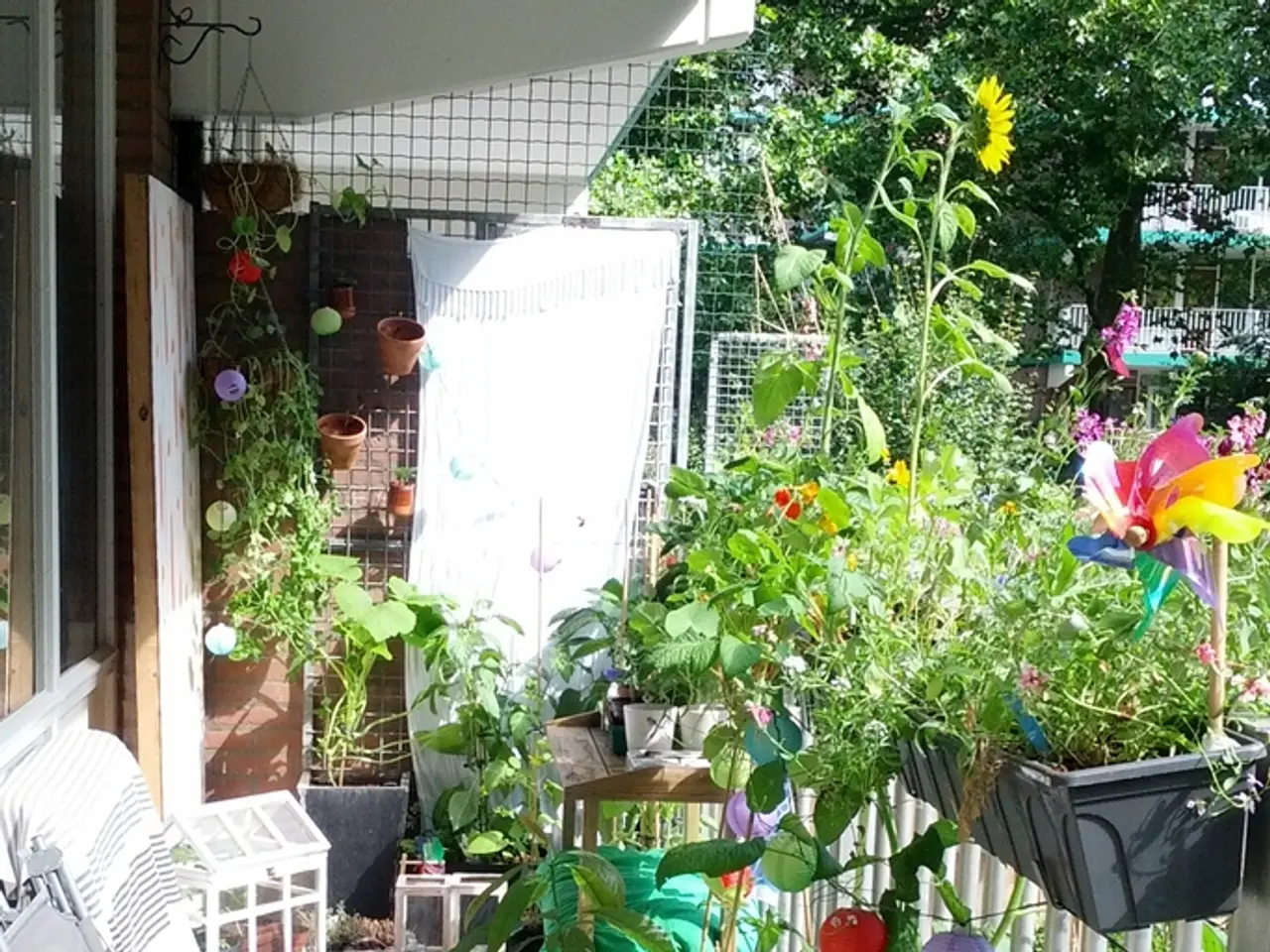Sustainable Home Construction Methods: A Look at the Best Natural Building Techniques
In the pursuit of a more sustainable future, home building is evolving to prioritise energy efficiency, comfort, and minimal environmental impact. Here are ten techniques leading the charge for a greener tomorrow.
1. Solar Energy Systems
Harnessing solar power to generate renewable electricity is a significant step towards reducing reliance on fossil fuels and decreasing energy bills over time. [1][4]
2. Geothermal Heating and Cooling
Utilising the stable temperatures beneath the earth's surface for heating and cooling enhances energy efficiency, lowers greenhouse gas emissions, and offers a cleaner energy solution. [1]
3. Wind Power Integration
For off-grid or supplemental energy, wind turbines provide clean power and reduce carbon footprint. [1]
4. Rainwater Harvesting Systems
Collecting and reusing rainwater conserves potable water, reduces demand on municipal supply, and decreases stormwater runoff. [1][4]
5. Smart Home Energy Management
Smart thermostats, automated lighting, and energy monitoring optimise energy use and minimise waste by adapting to occupant behaviour in real time. [1][4]
6. Sustainable Building Materials
Using recycled steel, bamboo, reclaimed wood, low-VOC paints, and insulated concrete forms reduces environmental impact from extraction, improves indoor air quality, and enhances durability. [1][4]
7. Passive Design Strategies
Orienting buildings for optimal sunlight and ventilation, using thermal mass materials, and employing green roofs or living walls improve natural heating, cooling, and insulation, reducing mechanical energy needs. [1][2][3]
8. High-Performance Insulation and Windows
Double-glazed, low-emissivity glass windows and superior insulation maintain comfortable indoor temperatures year-round, cutting energy use and costs. [4]
9. Modular and Prefabricated Construction
Factory-built components reduce construction waste, improve build quality, and expedite timelines while often providing superior insulation. [2]
10. Water-Saving Fixtures
Installing low-flow showerheads, dual-flush toilets, and sensor faucets conserves water, reduces water heating energy, and supports sustainability in water-scarce regions. [4]
These techniques collectively provide benefits such as significant reductions in energy and water use, lower greenhouse gas emissions, improved indoor air quality, durability, and decreased construction waste. By combining passive design with renewable technologies and smart control systems, we can maximise comfort and environmental responsibility while progressing towards net-positive, sustainable homes. [1][2][3][4]
Additional Techniques
- Greywater systems are a budget-friendly way for homeowners to save water, using water from sinks, showers, and washing machines for irrigation and toilet flushing.
- Xeriscaping, or using plants that need little water and care, combined with rainwater harvesting, can significantly cut down on water consumption.
- Synthetic roof underlayment is a more durable and eco-friendly option compared to traditional asphalt-based roof underlayment, offering long-lasting protection against harsh weather conditions.
- Protecting components from weather damage is a benefit of modular construction, as parts are made indoors and less likely to get damaged by moisture or warping.
- Timber framing is gaining attention for its role in sustainable building, using renewable wood and offering better insulation and temperature control.
- 3D printing can build homes in hours and at a lower cost than traditional methods, making homes more affordable and sustainable.
- Eco-friendly insulation is essential for improving the energy efficiency of manufactured homes.
- By embracing sustainable design, the construction industry can lessen the environmental harm of building homes, using materials like sustainable wood and energy-saving windows, and adding solar panels and geothermal systems.
- Manufactured homes are a good choice for off-grid living and can be made more eco-friendly with the addition of insulation.
As we strive for a more sustainable future, these techniques offer a path towards energy-efficient, affordable, and eco-friendly homes. From solar energy systems to 3D printing, the construction industry is embracing innovation to create a greener tomorrow.
Read also:
- Essential insights into ambulatory pneumonia
- Key points for August 15: District of Columbia meetings, Alaska summit, redistricting debates, emergency room updates, and homelessness issues
- AI's Significance in the Medical Field: Discussion on AI's Functionality in Healthcare Settings
- Restrictions on Access to Almaty Center: Examining European and Asian Precedents








